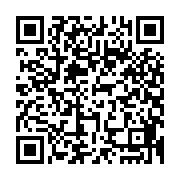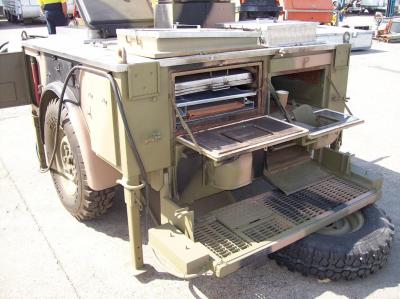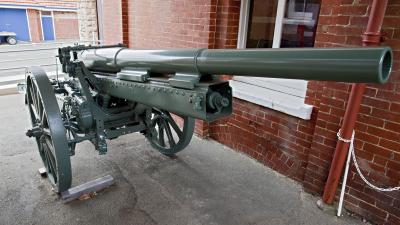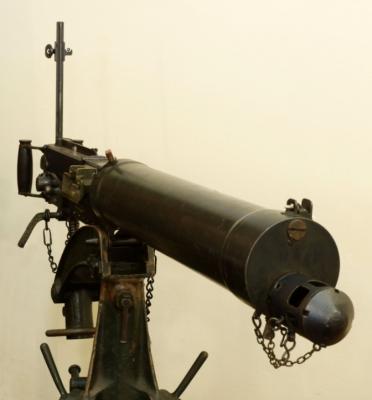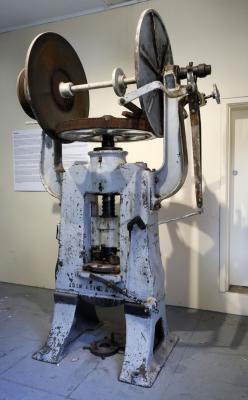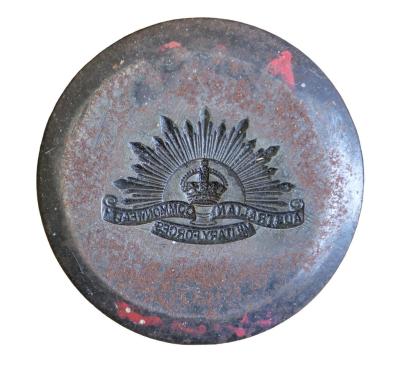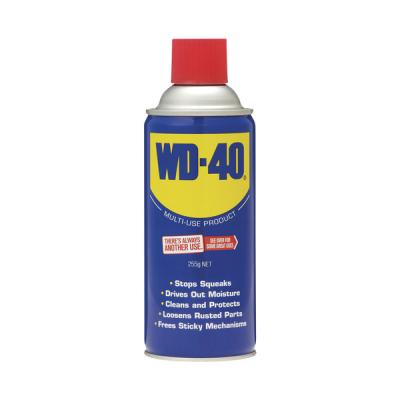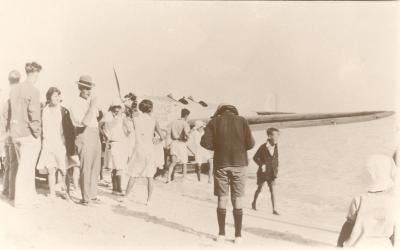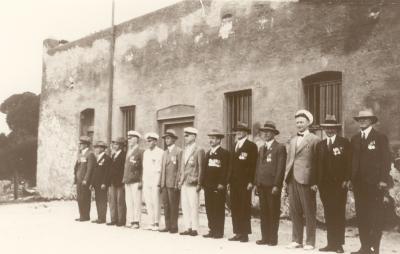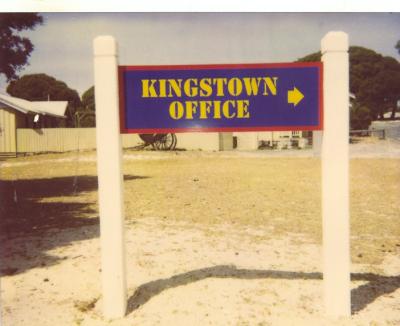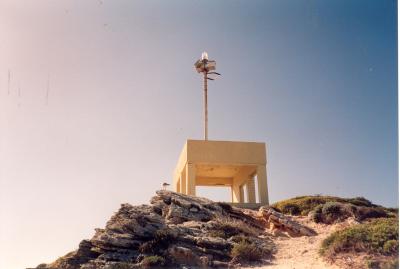Wiles Mobile Junior Steam Cooker
Built in Australia from 1942 until the early 1980s. Used by British, Australian and US forces during the Second World War, UK forces through to the 1960s, and the Australians up until 1980. The Wiles cooker was advanced for its time, in that it steamed food, rather than boiled it - thus preserving much more of its nutritional value. It was well liked by the troops who felt they got decent tasting food in the field, rather than boiled mush, as was often the case with other field kitchen meals.
With the outbreak of World War Two, the Australian Army eventually reverted to the use of steam cooking. With the support of Sir Stanton Hicks, who favoured the more nutritional steam cooking, the Army eventually adopted Wiles stoves for use in World War 2. Two models were produced, a 2 wheel and a larger 4 wheel model. They could be operational in 20 minutes, and cooking could take place while being towed up to 35 mph. The units remained in service in the Australian Army until 1980 when boiling/baking style cookers were reintroduced.
Details
Details
Having a hot meal in the field out on exercise or on deployment is important for the health and morale of ground troops. This type of field kitchen was developed during the Second World War by the Australian Army and used until the early 1980s. Towed behind trucks, Wiles Cookers were an important part of the supply and logistics 'train' supporting deployed Australian ground forces.
Sir Stanton Hicks CStJ, MSc, MD, PhD, FIC, was professor of Physiology and Pharmacology at the University of Adelaide. His major interest was human nutrition. In 1942 Australian troops came back from fighting the Japanese in New Guinea exhausted and malnourished. The army rations of bully beef and biscuits were insufficiently rich in vitamins to sustain men in combat in tropical conditions. Hicks was one of a vast army of scientists who worked behind the scenes to maximize the war effort. He made it his mission to improve the army diet. He set up the Australian Army Catering Corps and was the first Director of Catering for the Australian Army. He invented combat ration packs and tried to introduce vitamin-rich foods into the soldiers’ diet. Two of his more idiosyncratic innovations were wheat porridge and Tasmanian blue peas.
Open in Google Maps
Nearest geotagged records:
- Kitchen Field Mobile (KFM) (0km away)
- General Service Wagon World War 1 (0.02km away)
- Diorama - World War 1, 10 Light Horse and "The Great Ride", 1918 (0.02km away)
- 7 Field Ambulance Flag (0.02km away)
- Vietnam Era, Australia, Western Australia, Fremantle, Artillery Barracks, 1969 (0.02km away)
- Inter War, Australia, Western Australia, Fremantle, Artillery Barracks,1929 (0.03km away)
- Inter War, Australia, Western Australia, Fremantle, Artillery Barracks, LUNN-GARNER , 1938 (0.03km away)
- Vietnam Era, Australia, Western Australia, Fremantle, Artillery Barracks, 1969 (0.03km away)
- Inter War, Australia Western Australia, Fremantle, Artillery Barracks, WILLIAMS, 1935 (0.03km away)
- Inter War, Australia, Western Australia, Fremantle, Artillery Barracks, 1938 (0.03km away)
Nearby places: View all geotagged records »
Australian Army Museum of Western Australia
Australian Army Museum of Western Australia
Other items from Australian Army Museum of Western Australia
- Kitchen Field Mobile (KFM)
- German 10.5 cm Field Gun leFH 16
- Vickers Medium Machine Gun (MMG)
- MG 08 Machine Gun and Sight
- World War 1, Western Australia, Perth, "Big Bertha" 70 Ton Press from Sheridan's Badges , 1914 - 2014
- World War 1, Western Australia, Perth, SHERIDAN'S, Badge Dies used with Big Bertha 70 ton Press, 1914 - 2014
- Water Displacement 40 (WD-40)
- Western Australia, Rottnest Island, Seaplane at shoreline, 1930
- Inter War, Western Australia. Rottnest Island, Anzac Day Parade, 1935
- Western Australia,. Rottnest Island, Kingstown Barracks, Location signage, 2015
- Western Australia. Rottnest Island. Searchlight location.
- Western Australia. Rottnest Island. Unidentified.
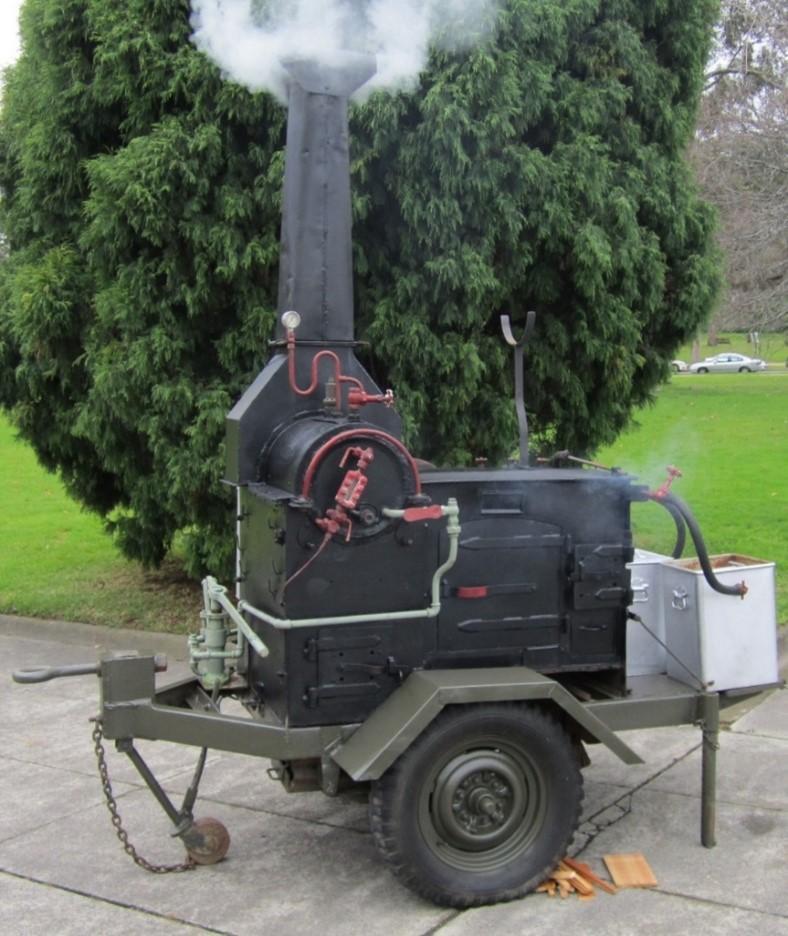
Scan this QR code to open this page on your phone ->
